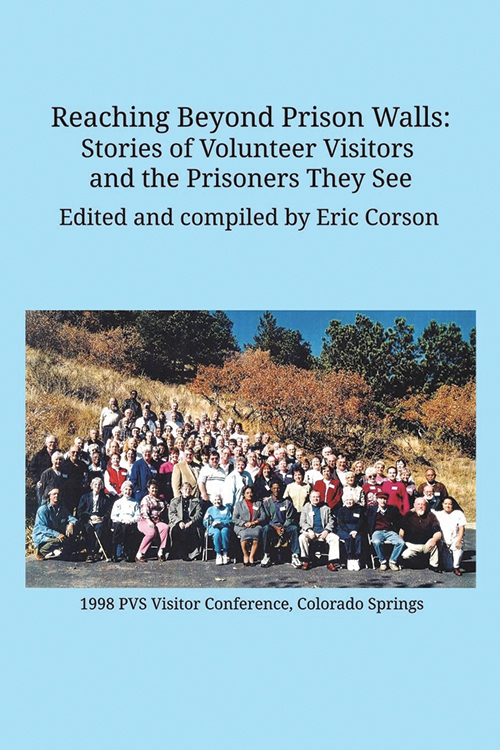
Reaching Beyond Prison Walls: Stories of Volunteer Visitors and the Prisoners They See
Reviewed by J. E. McNeil
August 1, 2022
Edited and compiled by Eric Corson. Self-published, 2021. 254 pages. $23.95/paperback.
This book gives some history of the Philadelphia-based nonprofit Prisoner Visitation and Support (PVS), in particular recounting its origins in 1968 when Friends and others who were visiting conscientious objectors in prison were told by those same COs that other prisoners needed visitors more than they themselves did. These included inmates rejected by their families as well as those whose families lived too far away for visits to be affordable. Many inmates had seen no one besides fellow prisoners and prison personnel for years or even decades. As a result, an interfaith witness began in 1972 with permission from the Federal Bureau of Prisons to allow visitation in all federal correctional facilities. In 1975, it was extended to military prisons.
I first met Eric Corson, who was the director of PVS for 40 years, around the year 2000 when I needed to have a better understanding of PVS. I had automatically become a board member when I became the director of the Center on Conscience and War (CCW). Eric and I had a great conversation, and I was very interested in the history of PVS and its work, especially since my late husband had been a criminal trial lawyer. But I quickly realized that traveling to Philadelphia, Pa., for regular board meetings was too much for me, given the large amount of traveling I already did for the center and my having a teenage son. So we agreed that I could ask a volunteer or staff of CCW to go in my stead, and that was that.
To be clear, there are some amazing stories in this book, but I feel it would be stronger with a different voice. The book is exactly as it’s described: a compilation of interviews of PVS volunteers, grouped by the prisons they visited. With the exception of an essay by Steve Landford, a retired warden of Federal Correctional Institution, Lompoc in California, along with a couple of stories of former prisoners (both draft resisters and more conventional inmates) who later became visitors themselves, the stories are very much the same—so much so that you can hear the questions without most of them actually being in the book; in this way, it can feel tedious to read. But as I said, there are amazing stories to be found within the repetition. One that stood out to me was by volunteer Carl Milofsky, who told about a prisoner in the Special Management Unit at U.S. Penitentiary, Lewisburg in Pennsylvania who wrote novels during his long days of 23 hours out of 24 in lockup. He would also call out questions so that the other nearby prisoners would discuss and argue. Whenever the discussion would fade, he would shout out another one.
Another story worth highlighting here comes from Federal Correctional Complex, Florence in Colorado. A prisoner told volunteer Jeannie Giddings that because she had treated him like a human at another prison, he started to think to himself, Why am I acting like an animal? So he began to teach other prisoners to read and write, and he learned to crochet and make toys for children. “The visits from you really changed my life,” he told Giddings.
Speaking of changed lives, I would have preferred that the stories be grouped thematically: for example, how people became visitors (“Someone visited my synagogue.”), fears visitors had (“I felt claustrophobic.”), good days (“We saved his life.” “It was his first visitor in 45 years.”), bad days (“He was murdered.” “He killed himself.”), and reasons for stopping visits.
But the most important question—why there should be visits—was answered again and again: because the people in prison are still people, and the visitors are often their only opportunity to be treated as such, to be listened to, and to be seen. That point and those gems of stories made the book a worthwhile read.
J. E. McNeil is a member of Friends Meeting of Washington (D.C.) and an attorney. She has been politically active for more than 50 years, during which she visited clients in prison a number of times. She was executive director of the Center on Conscience and War, and as such, was nominally on the board of Prisoner Visitation and Support.


